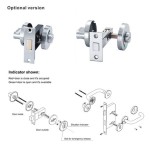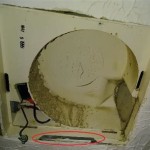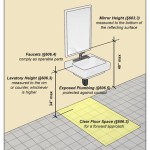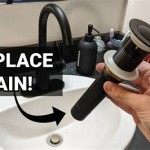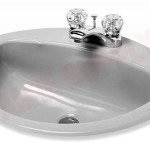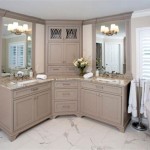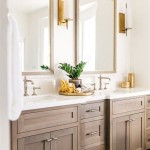Chrome vs. Nickel Bathroom Fixtures: A Comparative Analysis
Selecting the appropriate finish for bathroom fixtures is a crucial design decision that impacts both the aesthetic appeal and the long-term durability of the space. Chrome and nickel are two of the most prevalent choices, each offering distinct advantages and disadvantages. Understanding the properties of these materials and their suitability for various bathroom styles and practical needs is essential for informed decision-making.
This article will provide a comprehensive comparison of chrome and nickel bathroom fixtures, examining their aesthetic qualities, durability, cost, maintenance requirements, and environmental considerations. The aim is to equip readers with the knowledge necessary to choose the finish that best aligns with their individual preferences and functional priorities.
Aesthetic Properties: Shine, Color, and Style Compatibility
The primary distinction between chrome and nickel lies in their visual appearance. Chrome boasts a highly reflective, almost mirror-like shine. This brilliance makes it a popular choice for modern and contemporary bathroom designs, where it can contribute to a clean, streamlined aesthetic. Chrome's sharp reflectivity enhances the perception of light and space, making it particularly suitable for smaller bathrooms.
Nickel, on the other hand, presents a warmer, softer sheen. Its finish is less reflective than chrome, offering a more subdued and understated elegance. Nickel fixtures typically have a slight yellow or gold undertone, which imparts a sense of warmth and sophistication. This makes nickel a versatile option that complements both traditional and transitional bathroom styles. The subtle luster of nickel is often preferred for creating a more inviting and comfortable atmosphere.
The specific type of nickel finish further influences the aesthetic outcome. Brushed nickel, for instance, has a matte finish with visible brushstrokes, which adds texture and visual interest. Polished nickel, while still warmer than chrome, offers a higher level of reflectivity. The choice between these nickel variations depends on the desired level of formality and the overall design scheme of the bathroom.
Ultimately, the aesthetic preference between chrome and nickel is subjective and depends on individual taste. However, understanding the inherent qualities of each finish and their compatibility with different design styles is vital for achieving a cohesive and harmonious bathroom environment.
Durability and Resistance to Wear and Tear
The durability of bathroom fixtures is paramount, given their constant exposure to moisture, cleaning agents, and frequent use. Both chrome and nickel are relatively durable materials, but they differ in their resistance to certain types of wear and tear.
Chrome is known for its excellent resistance to corrosion and scratching. The electroplating process used to apply chrome creates a hard, protective layer that shields the underlying metal from the damaging effects of water and humidity. This makes chrome fixtures well-suited for high-moisture environments like bathrooms. The hard surface also resists scratching and denting, maintaining its pristine appearance over time.
However, chrome is susceptible to water spots and fingerprints, which can detract from its shiny appearance. Regular cleaning is necessary to maintain its luster. Also, if the chrome plating is damaged due to poor manufacturing or abrasive cleaning, the underlying metal can be exposed and corrode.
Nickel, while generally durable, is slightly softer than chrome. This means it is more prone to scratching, although the scratches may be less noticeable due to the softer sheen. Nickel's inherent properties make it naturally resistant to corrosion, though not to the same degree as chrome. Nickel finishes, particularly brushed nickel, tend to conceal water spots and fingerprints more effectively than chrome, reducing the frequency of cleaning required.
The choice between chrome and nickel regarding durability depends on usage patterns and maintenance habits. For bathrooms that experience heavy use and may not be cleaned as frequently, chrome may be the more practical choice. For bathrooms where a softer, more forgiving finish is desired, nickel offers a viable alternative.
Cost and Maintenance Considerations
The cost of bathroom fixtures varies depending on several factors, including the brand, style, and complexity of the design. However, in general, nickel fixtures tend to be more expensive than chrome fixtures. This price difference is primarily due to the higher cost of the raw materials and the more complex manufacturing processes involved in creating nickel finishes, particularly polished and brushed nickel.
The cost of ownership extends beyond the initial purchase price to include maintenance expenses. As mentioned earlier, chrome fixtures require more frequent cleaning to remove water spots and fingerprints. Special chrome cleaners are often recommended to avoid damaging the finish. While the cleaning process is relatively straightforward, the frequency can be a burden for some homeowners.
Nickel fixtures, especially those with a brushed finish, are more forgiving regarding water spots and fingerprints. This means they require less frequent cleaning, which can save time and effort. However, nickel finishes are more susceptible to damage from abrasive cleaners. Gentle, non-abrasive cleaners are recommended to avoid scratching or dulling the finish.
The long-term cost implications of choosing chrome versus nickel are therefore influenced by the frequency and type of cleaning required. While chrome fixtures may be less expensive initially, the ongoing cost of maintenance could potentially offset the initial savings over time. Conversely, the higher initial cost of nickel fixtures may be justified by the reduced maintenance requirements and the longer-lasting appearance.
Another aspect of cost consideration is the ease of repair or replacement. If a fixture is damaged, the availability and cost of replacement parts or entire replacements can be a significant factor. Chrome fixtures are generally more readily available and often less expensive to replace than nickel fixtures, due to their wider popularity and simpler manufacturing processes.
Ultimately, the cost-effectiveness of chrome versus nickel depends on a combination of factors, including the initial purchase price, the cost of maintenance supplies, and the potential cost of repairs or replacements. A careful assessment of these factors is essential for making an informed decision.
In conclusion, both chrome and nickel finishes present viable options for bathroom fixtures, each with its own set of advantages and disadvantages. Chrome offers a brilliant shine, excellent durability, and lower initial cost, but requires more frequent cleaning. Nickel, on the other hand, provides a warmer, softer aesthetic, is more forgiving regarding water spots, but tends to be more expensive and requires gentler cleaning. The optimal choice hinges on individual preferences, budget considerations, and maintenance habits.

Brushed Nickel Vs Chrome Learn The Difference Choose Right Faucet Finish
Brushed Nickel Vs Chrome Learn The Difference Choose Right Faucet Finish

Chrome Vs Brushed Nickel Stainless Steel Kitchen Hardware

Knowing Brushed Nickel Faucet Vs Chrome Differences And Similarities Arad Branding

Brushed Nickel And Chrome Which Is The Better Bathroom Faucet
Brushed Nickel Vs Chrome Learn The Difference Choose Right Faucet Finish

Brushed Nickel And Chrome Which Is The Better Bathroom Faucet

Polished Chrome Versus Nickel San Marino Ca Patch

What S The Difference Chrome Vs Brushed Nickel Bathroom Fixtures

The Main Differences Between Polished Nickel And Chrome
Related Posts
